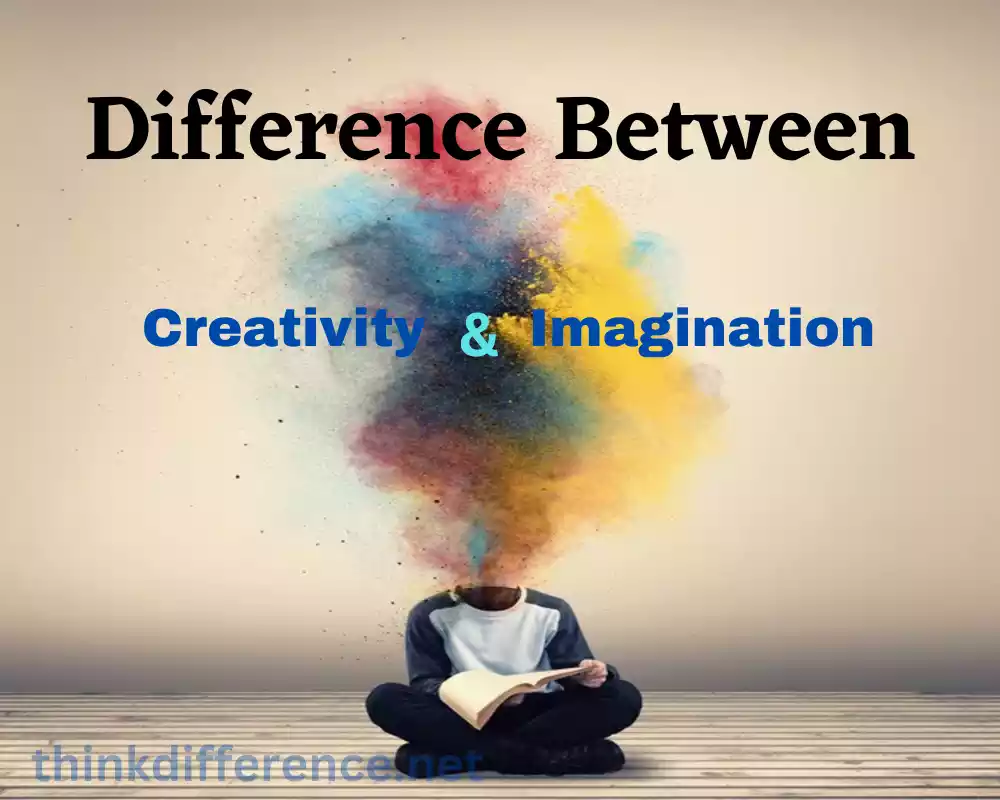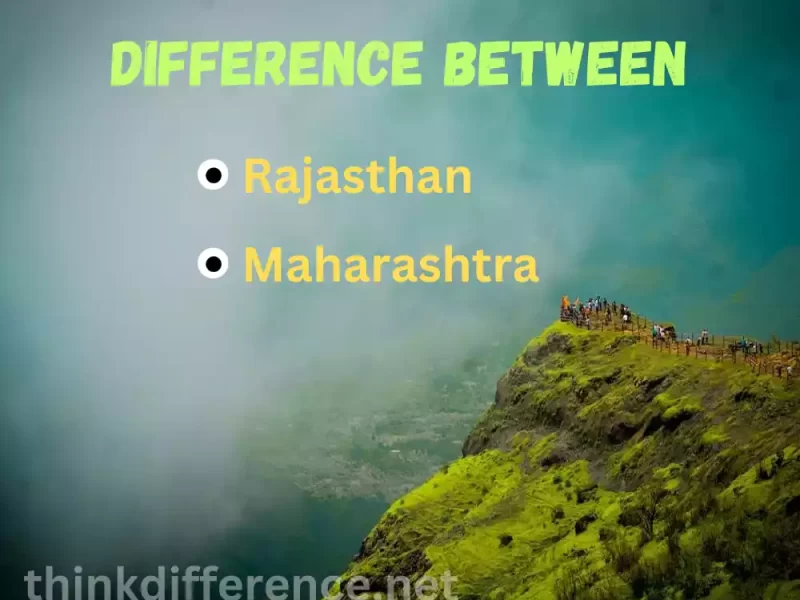Creativity and Imagination are core human cognitive abilities essential to living the best possible lives. Their relationship is complex but complementary – exploring imagination and creativity will enable us to realize their fullest potential by unlocking their full power to fully realize potential in ourselves and others. In this article we’ll investigate their intersection and reveal ways we can nurture these talents more fully.
What is creativity?
Creativity refers to the capacity for producing new and useful ideas or concepts, often by combining existing information, skills and experiences in unconventional ways in order to come up with something truly original or different. Exploring possibilities that lie outside our usual understanding as well as breaking convention and making connections among seemingly disparate ideas are hallmarks of creativity.
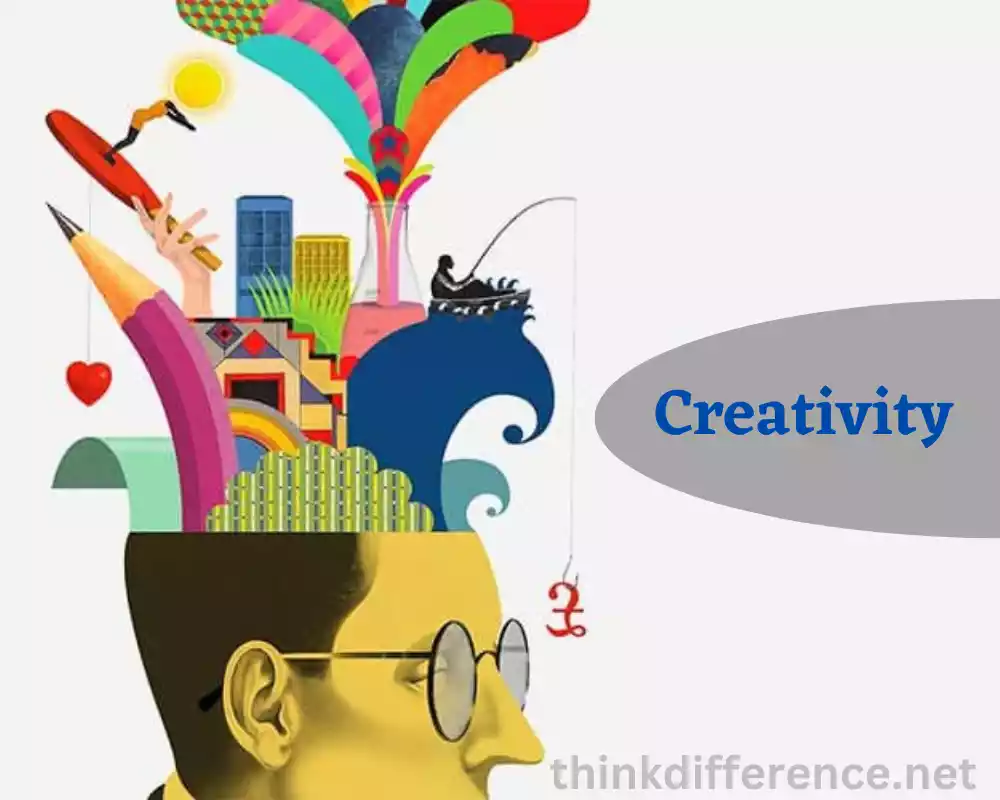
Key characteristics of creativity include:
- Originality: Creative ideas are fresh and unique, departing from conventional or traditional approaches.
- Flexibility: Creative individuals can adapt their thinking and approach to different situations, allowing them to explore multiple perspectives and possibilities.
- Fluency: Creativity involves generating a large quantity of ideas or solutions, demonstrating a rich imagination and divergent thinking.
- Problem-solving: Creativity is often applied to finding innovative solutions to complex problems or challenges.
- Aesthetic value: Creative outputs can exhibit beauty, elegance or appeal, depending on the context and domain.
Creativity can be found across industries and fields spanning music, literature, art and design as well as business, science and technology. Creativity plays an essential role in encouraging innovation, furthering technology advances and pushing human achievement to new limits. When people embrace their creativity they unleash their potential for innovation and create positive changes globally.
What is Imagination?
Imagine is defined as the capacity to form mental images, ideas or concepts not evident to sensory experience. To form mental representations of objects not directly observed or felt. With imagination comes an ability to envision scenarios, possibilities or concepts beyond immediate sensory awareness.
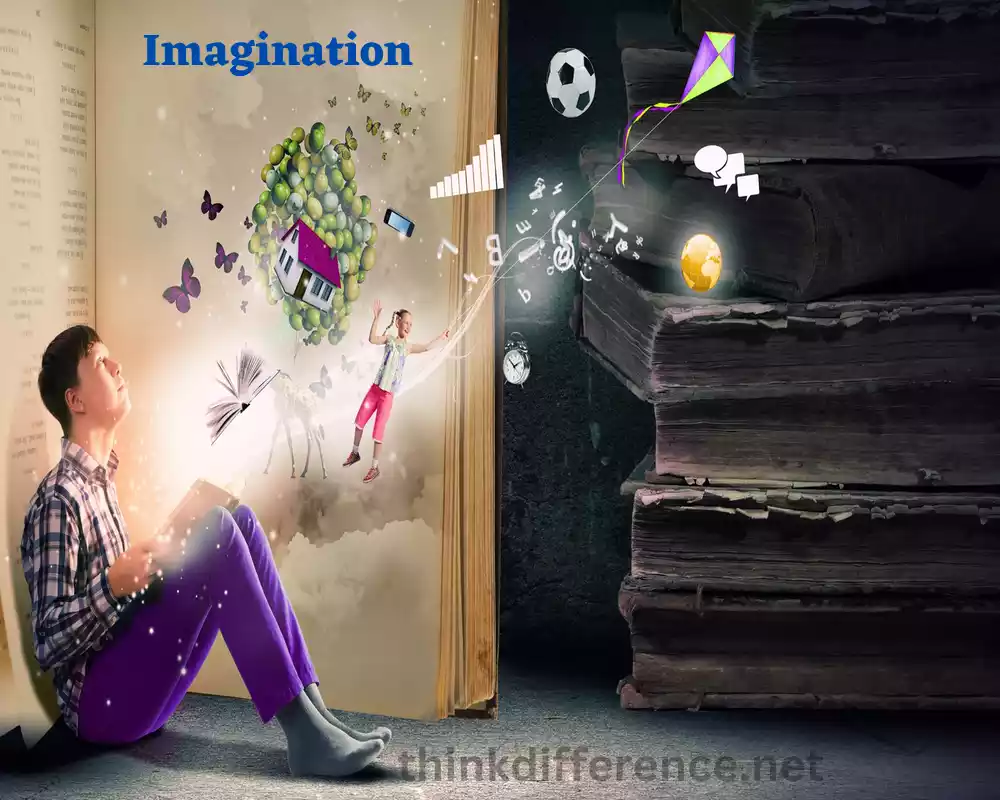
Key characteristics of imagination include:
- Mental imagery: Imagination involves the ability to form vivid mental pictures or sensory experiences in the mind’s eye, including visual, auditory or tactile sensations.
- Creativity and ideation: Imagination fuels the generation of new ideas, concepts or scenarios by combining existing knowledge and experiences in novel ways.
- Fantasy and playfulness: Imagination often manifests in the realm of make-believe, enabling individuals to create imaginary worlds, characters or narratives.
- Empathy and perspective-taking: Imagination facilitates the capacity to mentally put oneself in someone else’s shoes, understanding their thoughts, feelings and experiences.
- Future-oriented thinking: Imagination allows individuals to envision potential outcomes, goals or aspirations, helping them plan and strive for desired future states.
Imagine is not limited to any one field or occupation – it is part of human cognitive ability and can be found everywhere from literature, art and storytelling through innovation, problem-solving and even daily things like groceries! People use their ability to imagine to dream up possibilities that stimulate imagination while creating appreciation of wonder in the present tense – imagine is an invaluable way of self expression, exploration and personal growth!
The Importance of Creativity and Imagination in Various Fields
Creativity and ingenuity are highly valued traits across industries and fields alike, making their impactful presence increasingly essential in many different professions and fields. Here are just a few examples to illustrate this point:
- Arts and Entertainment: Creativity and imagination are at the core of artistic expression. Musicians, artists, writers and performers rely on their creative abilities to craft original and engaging works that engage viewers while testing limits of art world.
- Design and Architecture: Design and architecture require imagination and creativity as their drivers to produce innovative, eye-catching designs, products and spaces that appeal to consumers. Designers and architects utilize their creative thinking and imagination to envision unique solutions that enhance functionality, user experience and visual appeal.
- Science and Innovation: Creativity and imagination are essential in scientific research and innovation. Scientists and researchers need to think creatively to generate hypotheses, design experiments and develop new theories. Imagination fuels breakthrough discoveries and helps scientists envision possibilities that can lead to significant advancements in various fields.
- Business and Entrepreneurship: Creativity and imagination are essential tools in business for inspiring innovation, recognizing new opportunities and developing unique products or solutions. Entrepreneurs rely on their creative thinking to solve problems, differentiate their offerings and create value in competitive markets.
- Education: Thought and creativity play an essential part in classroom education. Through thinking critically and creating, learners develop critical reasoning abilities, problem-solving capabilities, as well as developing their passion for learning. Encouraging students to think creatively and use their imagination helps them explore diverse perspectives, discover their passions and develop innovative approaches to challenges.
- Technology and Engineering: Engineering and technology depend upon creative problem-solvers with innovative minds who can develop innovative inventions or systems capable of being enhanced and tackle difficult problems head-on. In these fields, being innovative requires being open-minded. Engineers and technologists need to think creatively to find efficient and effective solutions while imagining future possibilities.
- Marketing and Advertising: Creativity and imagination are central components to successful advertising and marketing campaigns. Creative thinking and imagination help marketers develop innovative strategies, captivating visuals and compelling narratives that engage audiences, differentiate brands and drive customer loyalty.
- Healthcare and Therapy: In healthcare and therapy, creativity and imagination play important roles. Healthcare professionals and therapists often use creative approaches to develop personalized treatment plans, encourage patient engagement and explore alternative methods for healing and well-being.
These examples highlight the significance of creativity and imagination in diverse fields. Acquiring and honing these skills will lead to enhanced creativity, problem-solving abilities and transformative advances that empower both individuals and organizations in an ever-evolving world.
Comparison table of Creativity and Imagination
Here’s a table outlining some key distinctions between Creativity and Imagination:
| Aspect | Creativity | Imagination |
|---|---|---|
| Definition | Ability to generate original and valuable ideas or solutions by combining or reorganizing existing knowledge or concepts | Capacity to form mental images, ideas, or concepts that are not present in immediate sensory experience |
| Function | Production of something new or innovative | Foundation for creativity, initial process of envisioning possibilities and generating ideas |
| Process | Divergent thinking, exploration of multiple ideas and perspectives | Envisioning, visualizing, and conceptualizing without the constraints of reality |
| Source | Draws upon existing knowledge, experiences and skills | Relies on the individual’s ability to create mental images or concepts |
| Scope | Broader, includes problem-solving, critical thinking and connecting different concepts | Focused on generating and exploring possibilities within the mind |
| Outcome | Creation of tangible or practical outcomes, such as artworks, inventions or solutions | Concerned with the mental imagery or conceptualization itself, serves as a foundation for creativity |
The Relationship between Creativity and Imagination
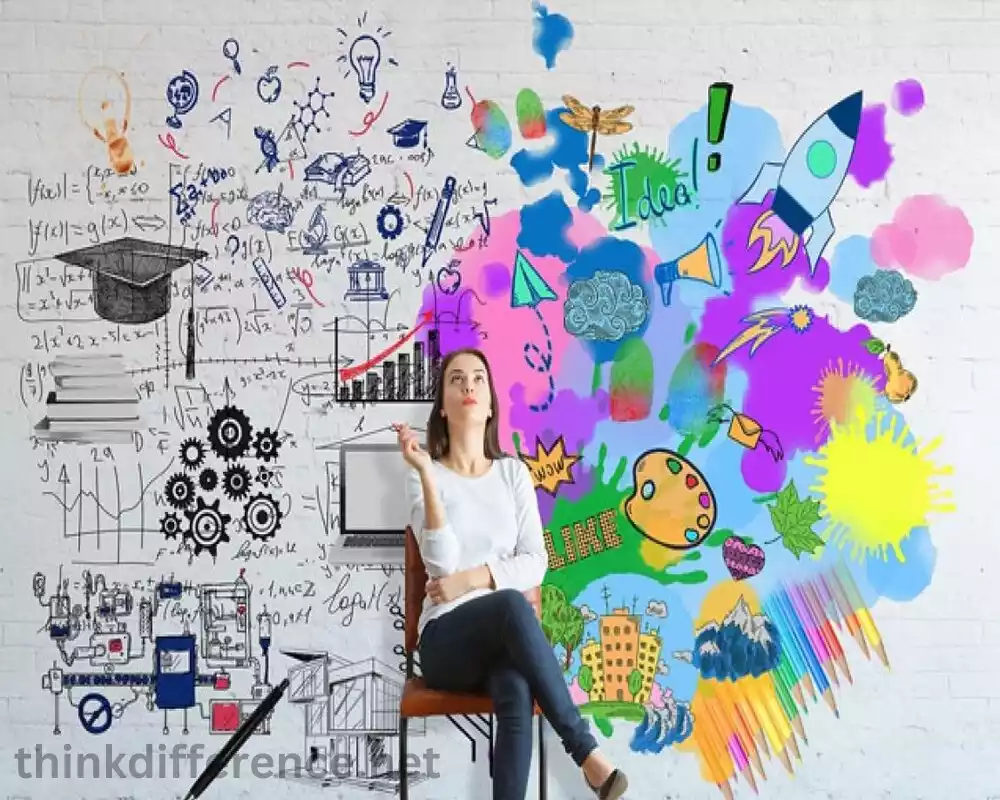
They share many characteristics in common. Although separate concepts, these overlap and influence one another greatly.
- Imagination as a Source of Creativity: Imagine is the source of imagination. It serves as an avenue. It provides the raw material for creative thinking by generating a variety of ideas, possibilities and mental images. Imagination allows individuals to envision novel concepts, scenarios or solutions that form the basis for creative endeavors.
- Creativity as the Expression of Imagination: Creativity transforms imaginative ideas into tangible outputs. It involves taking the imaginative concepts and bringing them to life through various mediums, such as art, writing, design or innovation. Creativity provides the means to manifest and communicate the imaginative ideas to the external world.
- Enhancing Creative Problem-Solving: Imagination fuels creative problem-solving by allowing individuals to consider alternative perspectives, explore unconventional approaches and generate innovative solutions. Imagination helps break free from conventional thinking patterns and encourages the exploration of uncharted territories.
- Imagination as a Playground for Creativity: Imagine provides an environment for exploration, playfulness and creative discovery – key ingredients of creative processes. Imagination enables individuals to suspend constraints and explore possibilities without limitations, fostering a mindset that is conducive to creative thinking.
- Collaboration and Synergy: When creativity and imagination come together in a collaborative setting, they can spark synergistic effects. Collaborating with others who have diverse imaginative perspectives can fuel the creative process by combining different ideas, sparking inspiration and pushing boundaries to create innovative outcomes.
- Iterative Process: Creativity and imagination often involve an iterative process. Imagination generates initial ideas or mental images, which are then refined and transformed through creative exploration, experimentation and feedback. The interplay between imagination and creativity allows for continuous improvement and evolution of ideas.
Creativity and imagination are mutually reinforcing forces. Imagination provides the fuel and inspiration for creative thinking, while creativity brings imaginative ideas to life. They work side-by-side in pursuit of innovative ideas, creative expression and problem-solving – as well as personal growth – with each other in support.
Nurturing Creativity and Imagination
Cultivating imagination and creativity is integral for individuals looking to maximize their capabilities and tap into their artistic side. Here are a few ideas and strategies designed to cultivate imagination and creativity:
- Encourage Curiosity: Curiosity is the driving force behind exploration and learning. Encourage a sense of wonder and curiosity by asking open-ended questions that encourage interpretation to trigger curiosity, as well as providing opportunities to discover.
- Provide Freedom and Space: Create an environment in which individuals feel free to express themselves without judgment or criticism from anyone present. Provide dedicated time and space for imaginative play, brainstorming, and creative pursuits.
- Embrace Diverse Perspectives: Expose individuals to diverse experiences, cultures and perspectives. This helps broaden their worldview, stimulates imagination and encourages them to think beyond their own familiar boundaries.
- Foster a Creative Culture: Establish a culture that values and celebrates creativity. Encourage risk-taking, experimentation, and the generation of multiple ideas. Recognize and reward creative achievements to reinforce the importance of creativity and imagination.
- Provide Tools and Resources: Offer access to a wide range of resources, materials and tools that can support creative and imaginative endeavors. This can include art supplies, books, technology or other mediums that facilitate exploration and expression.
- Encourage Cross-Disciplinary Learning: Foster connections between different fields of knowledge. Encourage individuals to explore ideas and concepts from various domains, as this can spark innovative thinking and promote the transfer of ideas between different areas.
- Support Collaboration and Dialogue: Collaboration with others can stimulate imagination and foster creative thinking. Make available opportunities for individuals to collaborate, exchange ideas and engage in productive dialogue in order to generate new perspectives and come up with creative solutions.
- Embrace Failure and Iteration: Encourage a growth mindset that embraces failure as an opportunity for learning and improvement. Encourage individuals to iterate and refine their ideas through feedback and reflection, promoting resilience and adaptability.
- Encourage Playfulness and Unstructured Time: Playfulness can be a catalyst for imagination and creativity. Encourage students to participate in enjoyable, unstructured experiences so that they may play and explore freely.
- Provide Inspirational Experiences: Expose individuals to inspirational experiences, such as visiting museums, attending performances or engaging with thought-provoking literature. Such experiences can ignite the imagination and inspire creative thinking.
Implementing these strategies and creating an environment conducive to imagination and creativity allows individuals to enhance their own creativity as well as explore opportunities in both professional and personal arenas that could improve their lives.
Creativity and Imagination in Problem-Solving
Creativity and imagination play essential roles in problem-solving, helping individuals to view issues from different viewpoints, generate novel concepts and produce innovative solutions. Here’s an example of how imagination and creativity help with problem-solving:
- Breaking Conventional Patterns: Creativity and imagination help individuals break free from conventional thinking patterns and explore new approaches to problem-solving. They encourage individuals to challenge assumptions, question existing norms and consider alternative possibilities.
- Generating Diverse Ideas: Imagination allows individuals to envision a wide range of ideas and possibilities. By leveraging creative thinking, individuals can generate a multitude of potential solutions to a problem, increasing the likelihood of finding a novel and effective approach.
- Making Unlikely Connections: Creativity and imagination facilitate the ability to connect seemingly unrelated ideas, concepts, or experiences. This allows individuals to draw inspiration from diverse sources and apply insights from one domain to another, leading to innovative problem-solving strategies.
- Thinking Outside the Box: Creative thinking encourages individuals to think beyond traditional boundaries and explore unconventional solutions. Imagination helps individuals envision possibilities that may not have been considered within a more rigid or narrow mindset, opening up new avenues for problem-solving.
- Overcoming Constraints: Creativity and imagination enable individuals to overcome perceived limitations or constraints associated with a problem. By thinking creatively, individuals can find ways to work around limitations, challenge constraints and develop solutions that push boundaries.
- Iterative and Adaptive Problem-Solving: Creativity and imagination facilitate an iterative problem-solving process. They encourage individuals to experiment, learn from failures and refine their approaches based on feedback and new insights. This adaptive problem-solving process leads to continuous improvement and increased likelihood of finding effective solutions.
- Encouraging Risk-Taking: Creative problem-solving requires a willingness to take risks and embrace uncertainty. Imagination helps individuals envision potential outcomes and weigh the risks and rewards associated with different approaches. This encourages individuals to step outside their comfort zones and explore innovative solutions.
- Promoting Innovation: Creativity and imagination are the driving forces behind innovation. By infusing problem-solving with creative thinking, individuals can develop groundbreaking solutions that go beyond incremental improvements, fostering meaningful and transformative change.
Integrating imagination and creativity into problem-solving methods increases our capacity to come up with innovative solutions, think critically and handle even the most complicated problems more successfully. By embracing these qualities, individuals can tackle problems more effectively, unlock new opportunities, and create positive impact in various domains and industries.
Overcoming Blocks to Creativity and Imagination
At times, our ability to think and create can be hindered by various obstacles or hindrances. Here are some of the more frequently occurring impediments to imagination and creativity as well as strategies for overcoming them.
- Fear of Failure or Judgment: The fear of making mistakes or being criticized can stifle creativity and imagination. To overcome this, create a safe and supportive environment that encourages experimentation and risk-taking. Be certain to emphasize the fact that failure is an integral component of creativity and may provide rewarding learning experiences.
- Self-Doubt and Negative Self-Talk: Self-doubt and negative self-talk could thwart creativity. Challenge negative thoughts and beliefs by practicing self-compassion and cultivating a positive mindset. Focus on strengths and past successes to build confidence in your creative abilities.
- Lack of Inspiration or Exposure: A lack of exposure to new experiences, ideas or perspectives can hamper creativity and imagination. Seek inspiration from diverse sources such as books, art, nature, travel or conversations with others. Engage in activities that stimulate your mind and expose you to different viewpoints.
- Routine and Repetition: Sticking to rigid routines or repetitive patterns can inhibit creative thinking. Break out of familiar routines by seeking new experiences, exploring different environments, and introducing variety into your daily life. Allow yourself to explore new paths and break away from established habits.
- Stress and Time Pressure: High levels of stress and time pressure can hinder creative thinking. Find ways to manage stress through relaxation techniques, mindfulness or physical exercise. Create dedicated time for creative pursuits, allowing yourself the freedom to explore ideas without strict deadlines.
- Lack of Playfulness and Curiosity: Creativity thrives on playfulness and curiosity. Embrace a childlike mindset by engaging in activities that spark joy, encourage experimentation and promote imaginative play. Foster curiosity by asking questions, seeking new knowledge and exploring unfamiliar territories.
- Overthinking and Analysis Paralysis: Overanalyzing and excessive self-editing can hinder creative thinking. Practice letting go of perfectionism and embrace the idea of “flow” by allowing ideas to flow freely without judgment or self-censorship. Capture ideas as they come and refine them later.
- Limited Perspective or Narrow Focus: Broaden your perspective by seeking input from others, collaborating with diverse individuals, and actively seeking out different viewpoints. Engage in activities that challenge your assumptions and expose you to alternative ways of thinking.
- Lack of Mindfulness and Presence: Creativity flourishes when you are fully present and aware of your surroundings. Practice mindfulness techniques such as meditation or deep breathing to cultivate a focused and receptive state of mind that allows creative ideas to emerge.
- Lack of Structure or Direction: While too much structure can stifle creativity, a complete lack of structure can lead to scattered thinking. Find a balance by creating a loose framework or setting clear goals that provide a sense of direction while still allowing for creative exploration within those boundaries.
By recognizing and actively addressing these blocks, individuals can unlock their creative potential and nurture their imagination, allowing for greater innovation, problem-solving and personal growth.
Enhancing Creativity and Imagination in Children
Engaging children’s creativity and imagination is crucial for their personal and academic growth, problem-solving ability and overall well-being. Here are a few strategies designed to cultivate this creative side in kids:
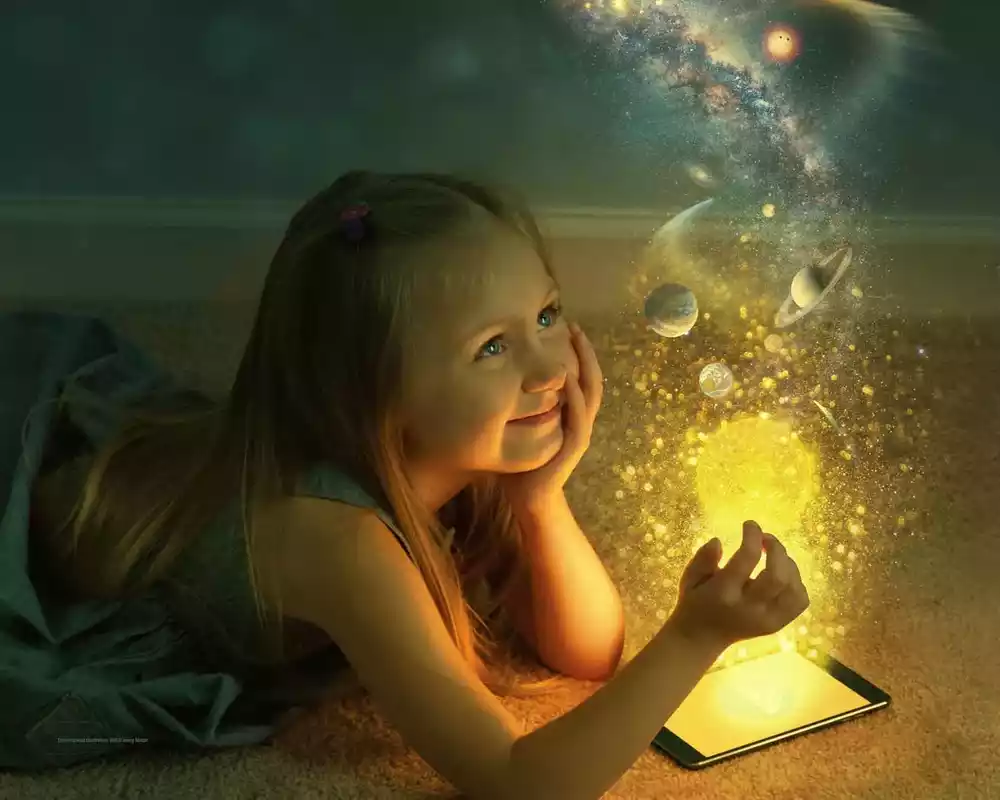
- Provide Open-Ended Play Opportunities: Offer children toys, materials and environments that encourage open-ended play. These could include building blocks, art supplies, costumes or natural materials like sticks and stones. Open-ended play allows children to explore their imagination and creativity without prescribed outcomes.
- Encourage Divergent Thinking: Promote divergent thinking by asking open-ended questions and encouraging multiple solutions or perspectives. Encourage children to think beyond conventional answers and explore various possibilities.
- Support Imaginative Play: Allow ample time for imaginative play, where children create pretend scenarios, act out roles and engage in make-believe. Provide props and materials that can enhance their imaginative play experiences.
- Expose Children to the Arts: Introduce your children to various forms of art such as dancing, music, storytelling and painting. Attend concerts, visit art museums or participate in creative workshops to expose children to different artistic expressions and inspire their imagination.
- Foster Curiosity and Exploration: Encourage children’s natural curiosity by providing opportunities for exploration and discovery. Take them on nature walks, encourage scientific experiments or provide books that stimulate their curiosity and encourage them to ask questions.
- Limit Screen Time: Excessive screen time can limit children’s imaginative play and creativity. Set limits on screen time and encourage alternative activities that promote creativity, such as arts and crafts, reading or outdoor play.
- Value and Encourage Creativity: Show appreciation for children’s creative efforts and accomplishments. Create a supportive environment where their ideas and creations are valued, celebrated and displayed. Encourage them to express themselves creatively without fear of judgment.
- Allow for Mistakes and Failure: Help children understand that mistakes and failures are part of the creative process. Encourage them to embrace challenges, learn from setbacks and see failures as opportunities for growth and improvement.
- Provide a Variety of Materials and Resources: Offer a wide range of materials, books, and resources that can stimulate children’s creativity and imagination. Encourage them to experiment with different mediums and explore new ideas.
- Be a Role Model: Model creativity and imagination yourself. Participate in creative activities and share your creative thoughts to show that you can think outside the box. Children are more likely to embrace their own creativity when they see it valued and practiced by the adults around them.
Parents and teachers can create an environment which nurtures children’s imaginations while simultaneously building essential lifelong skills and capacities that will serve them throughout their lives. With these strategies in place, both can foster an atmosphere conducive to creativity that fosters the imaginations and creativity of children while teaching essential life-skills that will serve them throughout their journeys.
Benefits of Cultivating Creativity and Imagination
Cultivating imagination and creativity has many positive aspects that can positively influence different areas of people’s lives, including. Here are the top benefits associated with cultivating imagination and creativity:
- Problem-Solving Skills: Creativity and imagination promote flexible thinking and the ability to generate innovative solutions to problems. Individuals who cultivate these skills are more adept at approaching challenges from different angles, thinking critically and finding effective and unique solutions.
- Innovation and Adaptability: Creativity and imagination are essential drivers of innovation. People who can recognize and embrace their creative talents tend to think outside the box, question the status quo and produce novel concepts which lead to advances and breakthroughs in medicine and other areas. They are also better equipped to adapt to changing circumstances and navigate uncertainty.
- Self-Expression and Communication: Cultivating creativity and imagination allows individuals to express themselves authentically and effectively. Art music, writing or even journal writing provide people an outlet to express themselves effectively in unique and effective ways. They enable us to convey our emotions, thoughts and ideas effectively.
- Emotional Well-being: Engaging in creative activities and thinking creatively can greatly enhance emotional well-being. Creativity provides a sense of relief, helping reduce anxiety while simultaneously raising self-esteem and creating feelings of satisfaction and accomplishment.
- Critical Thinking and Decision-Making: Creativity and imagination foster critical thinking skills by encouraging individuals to analyze information, evaluate multiple perspectives and make informed decisions. Thinking critically sharpens thinking skills and allows individuals to make better decisions across a spectrum of fields.
- Learning and Intellectual Growth: Cultivating creativity and imagination enhances the learning experience. It encourages curiosity, exploration and a thirst for knowledge. Creative thinking promotes active engagement with information, leading to deeper understanding, improved memory retention and enhanced cognitive abilities.
- Collaboration and Communication Skills: Creativity and imagination foster collaboration and effective communication. When individuals bring their unique perspectives and ideas to collaborative efforts, it leads to innovative solutions and synergy. Creative thinkers are also skilled at communicating complex concepts in accessible and engaging ways.
- Resilience and Adaptability: Creativity and imagination promote adaptability and resilience in the face of challenges. They encourage individuals to explore different possibilities, embrace change and find alternative approaches when faced with obstacles. This resilience enables individuals to bounce back from failures, learn from setbacks and persevere in pursuing their goals.
- Personal Growth and Self-Discovery: Cultivating creativity and imagination facilitates personal growth and self-discovery. Engaging in creative pursuits allows individuals to explore their interests, passions and unique talents. Self-reflection, reflection and the discovery of more aspects about oneself and their future are stimulated through journal writing.
- Cultural and Social Impact: Creativity and imagination have the power to shape culture and society. They inspire new ideas, challenge social norms and foster empathy and understanding. Creative and imaginative individuals often contribute to positive social change, cultural enrichment and the development of inclusive and diverse communities.
By encouraging imagination and creativity in individuals, they can realize their fullest potential, broaden their worldview and realize numerous personal, intellectual and social advantages.
The last word of Creativity and Imagination
Creativity and Imagination are the cornerstones of progress and self-discovery. By embracing and nurturing these inherent human qualities, we open doors to boundless opportunities and personal growth. Let us celebrate our creative spirit and unlock the endless possibilities that lie within us.

